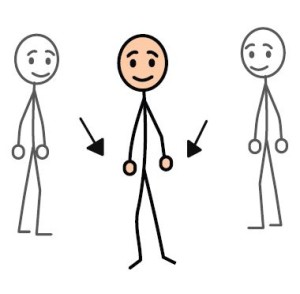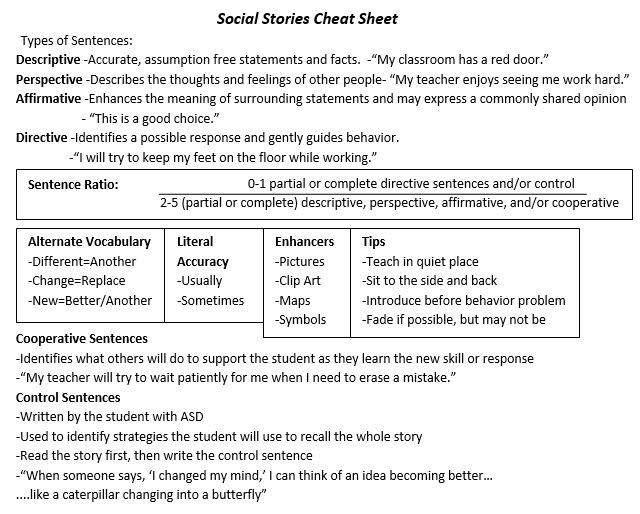 My first interaction with a Social Story came while teaching in a high school self contained program when a student with autism was having an escalation next door. I went over to see how I could support and one of my colleagues handed me a laminated list of 20 things the student should not be doing. A bit confused, she asked if I would go read him this “Social Story” to see if he would settle down. And try I did, but like pouring fuel to put out a fire, I only made matters worse. What I later learned was that I was working with a bad Social Story that was being used in an inappropriate way. But unless you were taught, how would you know?
My first interaction with a Social Story came while teaching in a high school self contained program when a student with autism was having an escalation next door. I went over to see how I could support and one of my colleagues handed me a laminated list of 20 things the student should not be doing. A bit confused, she asked if I would go read him this “Social Story” to see if he would settle down. And try I did, but like pouring fuel to put out a fire, I only made matters worse. What I later learned was that I was working with a bad Social Story that was being used in an inappropriate way. But unless you were taught, how would you know?
Despite the wide use of Social Stories, there is still a common misuse of this tool in education. Many educators learn how to write Social Stories by looking at other bad examples, which breeds more poor examples of Social Stories. And when educators have the wrong information on how to create and use a Social Story, they can be anywhere from less effective to actually triggering a child. Luckily the creator of Social Stories, Carol Gray, created a DVD training called “Writing Social Stories” in 2000. This two and a half hour presentation lays out in detail everything you need to know to be successful at using Social Stories. Over the years she has had added new components to this strategy, but as far as video training goes, this is the best you will find.
If you are like me and have watched this course before but have trouble recalling the key information, I created the Social Story cheat sheet. This is not officially endorsed by Carol Gray, but if you need a reminder of what to include when you are in a pinch for time, this can be a life saver. It does not take the place of taking this course, but it can enhance your ability to recall what you learned. Print it, laminate it, post it, use it, and enjoy! Your kids are counting on it!






